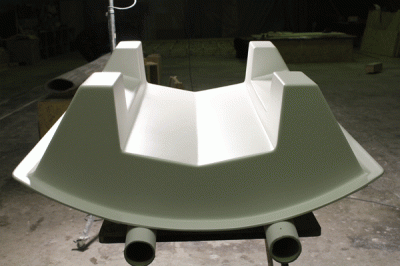Some 15 years ago I attended a lecture by acoustic expert Joseph Smullin on structure bourne noise and how to attenuate it. Our light multihulls are particularly vulnerable to that. Off top of my head, this is what I remember.
As I recall, the features needed to attenuate the noise include, more core weight, more laminate elasticity, add cross structure in the direction of engine rotation, and isolation of the engine and beds from the hull.
I revised my engine bed drawings to take advantage of that then new information. To best of my knowledge, none of my builders until now has ever followed my plans. It doesn’t seem to matter if the builders are highly regarded like Schooner Creek or the inept like Shaw, they slam in a pair of wood 4 x 4s and call it done.
Use minimum 100 kg foam. Use the more elastic type foam. The cross bracing is critical to reducing the noise. Joe preferred the engine beds not to sit directly on the hull, but on a layer of elastic like trevera. I expect that hull bonding adhesive would work as well. This engine bed from the Arteran Catamaran builders in Estonia look great. OK, I’d like to see a bit more cross connection, but these are the best so far.

Seems like the ultralight multihulls would be a good platform for an electric drive with batteries and a small generator. There are some good options – finally – mostly European of course, but even that is changing.
If what you need is to be able to get away from the dock, or out of an anchorage, you don’t need a lot of motoring time.
The “small generator” is still a problem. I have been trying to find a small 48-volt DC generator for an installation on a monohull, but I may have to settle for diesel.
sounds like a fine idea.
Kurt